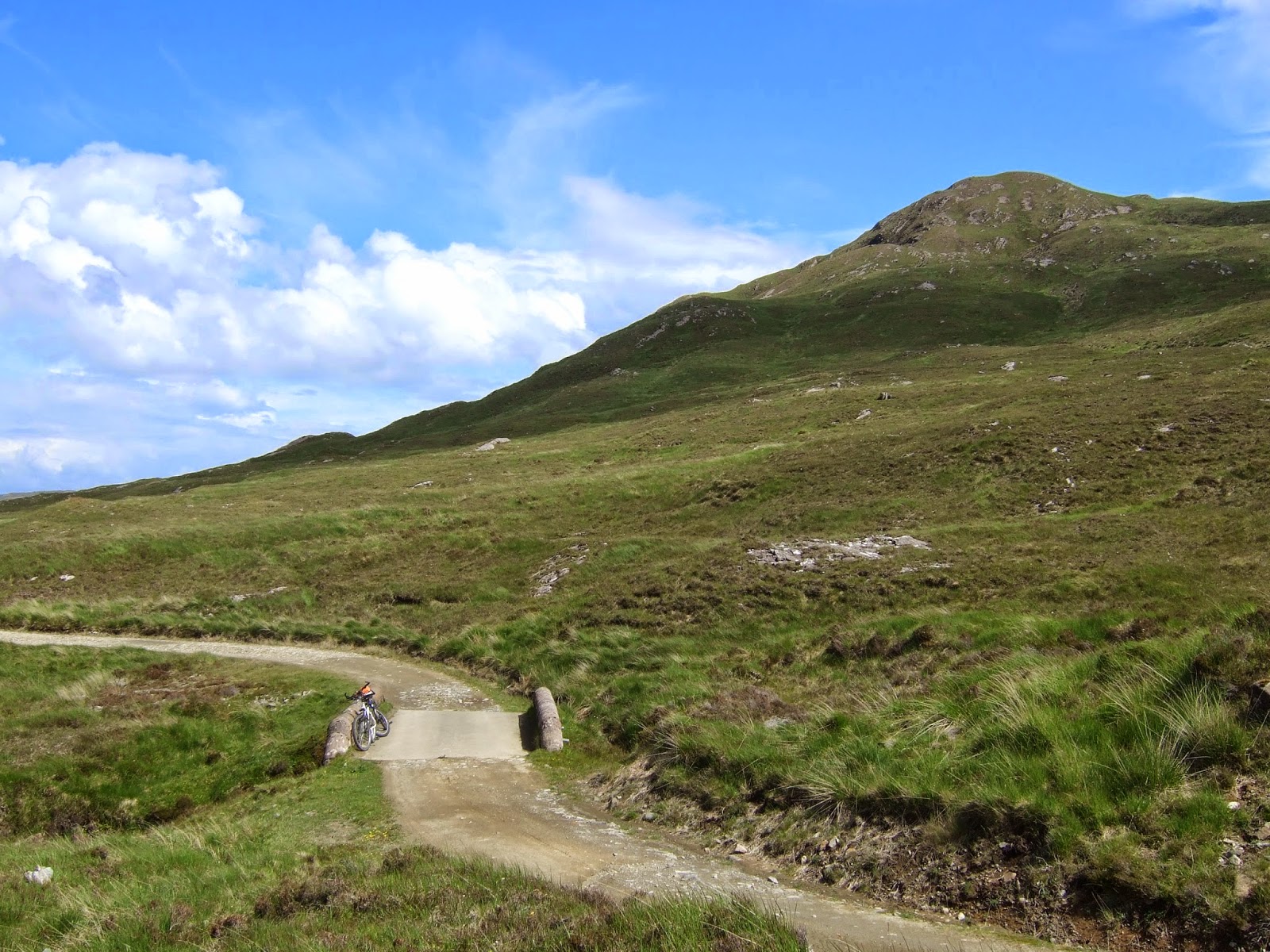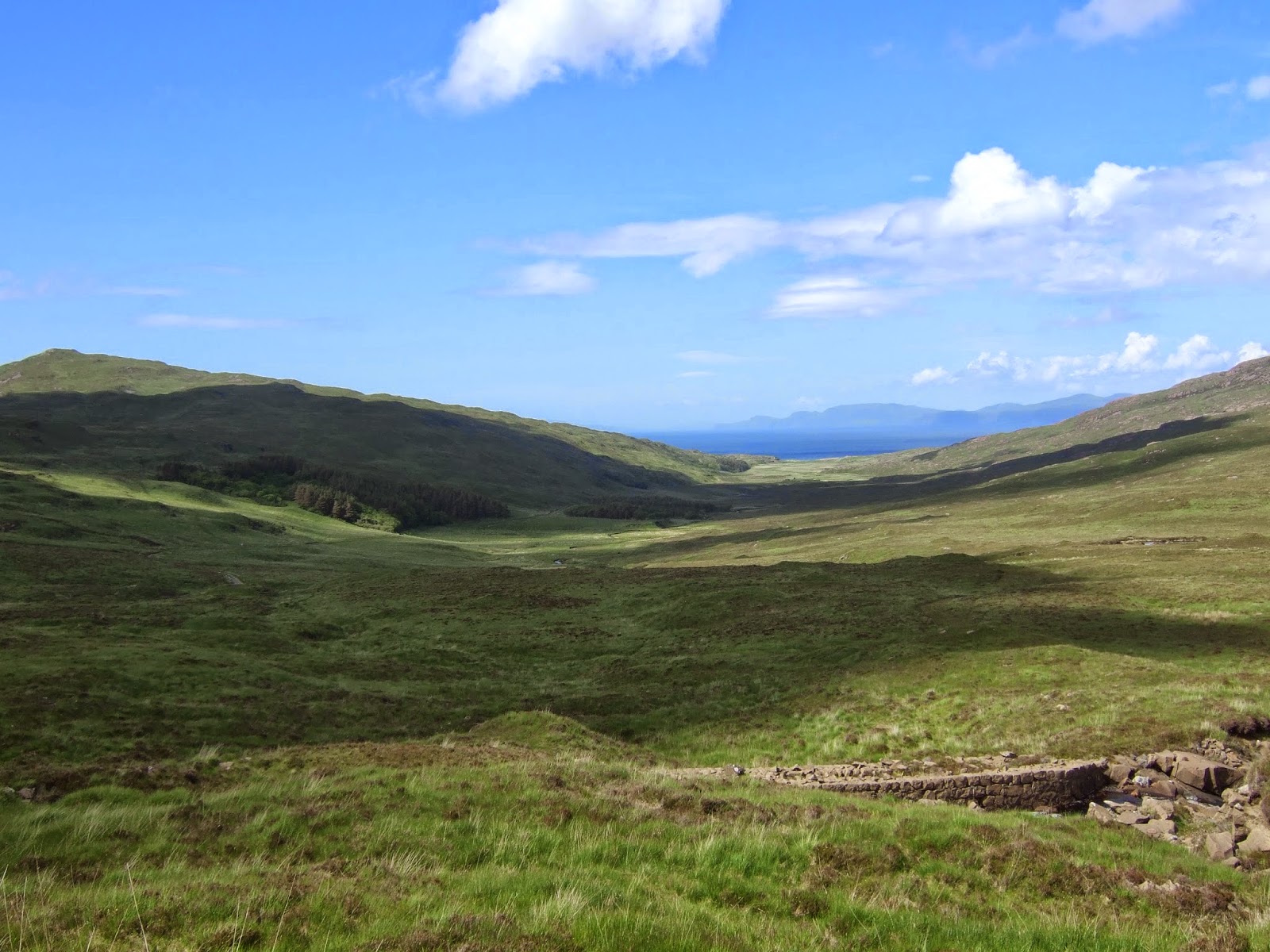Coming back here is a lesson in how to be contented - one I am very bad at learning. Despite the beauty and quiet of the island I know now that I am not an island-dweller by nature; the sense of boundaries enclosing us is strong and the need to explore life in all its many facets is often overwhelming and hard to deal with when the only "way out" is to cycle up a big hill. So much the harder after a week when I could indulge myself by disappearing into a crowd and "sailing" the Tube or overground to a destination only I need know about. Not that I had any secrets - but it satisfies a deep need in me to be able to make my own way to places and think my own thoughts, without worrying about my impact on others or theirs on me. This is something one always has to bear in mind on Rum; what you feel and think will always have an impact in some way, in your interactions with others and your actions in your own life. There's no automatic boundary between your private and your public life...
The word "indulge" makes it sound as though being on the mainland or rather, not being on Rum is somehow akin to "spoiling oneself" - sometimes the resilience needed to be here can turn into a kind of pride in adversity and a kind of disapproval of the "ease" of mainland life. What is true is that living here has given me an inner resilience that nothing can now take away. I notice my carefreeness about the future compared to my London friends, my lack of worry compared to how I used to be. But the cost has been high. Coming back gives you perspective on both the good and bad of being here. I often wish I could be more like Mel and just see things without judging them, but this is something I am still learning to do...
So what is it about being here, what is it I am missing? It's not just the anonymity - that gets tiring too after a while. It's not just the Tube or the buses or the swimming pools or the pubs - although naturally I miss all of them. Those are things that are just symbolic of a bigger thing. Although cities can be exhausting, lonely and hard places to be - especially when you are poor - they are also full of striving. Striving not only for the next promotion or to increase your "net worth" (my "unword" of the year!), although lots of people do that of course, and not just to survive, although lots of people do that too. Cities are also full of people striving to make life more joyous; full of people who are playing, as well as people who are working hard, and in many cases it's kind of the same thing. When you think about the future and when you imagine something good, you have to be playful. Play means you are doing something aimed purely at the imagination - at making people happier or giving them a life with more possibilities. The opening of a new transport connection may not always be strictly necessary (though I'm sure people feel that it is) but it always makes me happy because it shows that people are trying to make something good happen. But it also makes me smile when I walk down a street and see that someone has opened a new coffee shop or a new gallery or has done some graffiti that is exciting and funny, or just someone sitting on the pavement chatting to the crowds or busking in a doorway, or demonstrating for a better world. Or to look at the Proms with the sheer amount of organisation that has gone into basically just giving people a good time, and to see all of those hundreds of people at that Prom getting excited about a piece of music that is also extremely political. But perhaps it is just the sheer volume of people, all with their imaginations, thoughts and ideas ticking over all the time, that gives me a sense of aliveness. And knowing that to make things work, they have to work together, often putting personal feeling aside for a while to make other things happen; that gives me hope.
Virginia Woolf wrote in her diary that "in the countryside, the soul rises to the top". This was not a good thing for her; she meant that there is no escaping oneself, no new impressions coming in to settle the soul where it needed to be, deep inside, mulling over those impressions and turning them into writing. It is true that here there is no escaping what you are or who you are. That can be a good thing and I have learned a lot from it, some essential things I would probably never have learned in London or Berlin. Also, I have been able to write; to distil all those millions of impressions, thoughts and ideas from the city, into something focused and different. But at the same time I sometimes want not only to give energy to the island, but to get it back; to see things that just make me smile without having any responsibility for them. Is this good or bad? Well, maybe one thing I still need to learn is not to ask that question; to take it as it is; to see if it changes just by existing, like the natural world always does.
 |

















































